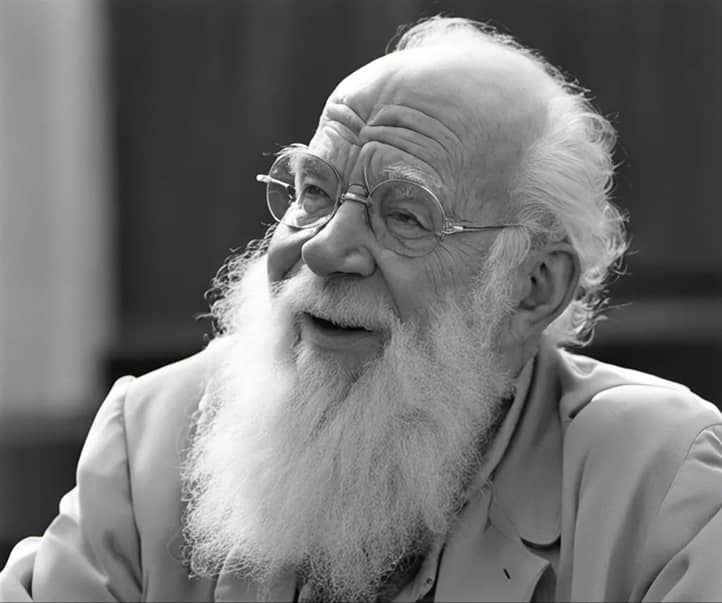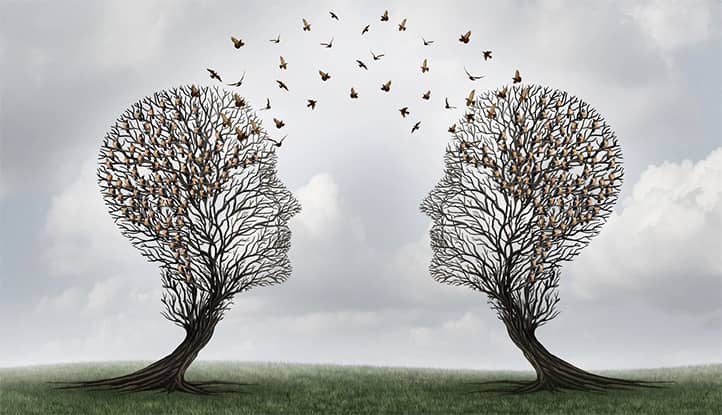Gestalt therapy is an influential approach in psychotherapy that focuses on the present moment and the holistic perception of human experience. This method helps people become aware of their feelings, thoughts, and behavior to achieve greater harmony and satisfaction in life.
Gestalt therapy was developed in the 1940s by Fritz Perls, Laura Perls, and Paul Goodman. The name “gestalt” comes from a German word meaning “whole” or “form.” This approach emerged as a response to the limitations of psychoanalysis and behaviorism, offering a more holistic view of the human psyche.
Fritz Perls, being a psychoanalyst, began developing his method by integrating ideas from Gestalt psychology, existentialism, and phenomenology. In 1951, in collaboration with Ralph Hefferline and Paul Goodman, he published the book Gestalt Therapy: Excitement and Growth in the Human Personality, which laid the theoretical foundations for this new approach.
Since then, Gestalt therapy has continued to evolve, enriched with new ideas and techniques. Today, it is widely applied in many countries worldwide and is recognized as an effective psychotherapy method.

Main Principles of Gestalt Therapy
The human psyche is an amazing and complex mechanism that constantly seeks balance and wholeness. Gestalt therapy, relying on this natural inclination, offers a unique set of principles to help people achieve harmony with themselves and the world around them.
Like an artist who creates a painting by combining separate strokes into a single canvas, Gestalt therapy helps a person unify scattered parts of their experience. This process of integration allows one to see a fuller picture of life and open up new opportunities for personal growth and development.
In a world where fragmented perceptions of reality often prevail, the Gestalt approach encourages a return to a holistic view. It’s as if we stop focusing on individual pixels on a screen and step back to see the entire image as a whole.
Gestalt therapy is based on several key principles that define its unique approach to understanding and addressing psychological issues.
The “Here and Now” Principle
One of the fundamental principles of Gestalt therapy is focusing on the present moment. Psychotherapists encourage clients to pay attention to what is happening to them right now, rather than getting lost in the past or worrying about the future.
This principle is based on the belief that real change can only occur in the present. By working with current experiences, people can better understand their patterns of thinking, emotion, and behavior, as well as discover new ways to respond to life’s situations.
Awareness and Responsibility
Gestalt therapy places great importance on developing awareness. Clients are taught to notice their thoughts, feelings, bodily sensations, and behavior. Increasing awareness allows people to make more conscious choices and take responsibility for their lives.
In Gestalt therapy, responsibility is understood not as guilt but as the ability to respond to situations and choose their reactions. Therapists help clients see how they can be active creators of their experience rather than passive victims of circumstances.
Wholeness of Experience
The Gestalt approach considers the person as a whole, where the body, emotions, thoughts, and environment are interconnected. Instead of focusing on just one aspect, such as thoughts or emotions, therapists strive to work with the client’s entire experience.
This principle also implies that people naturally seek wholeness and completeness. Unfinished situations or suppressed emotions can create an imbalance that a person strives to resolve.
Polarities and Integration
Gestalt therapy recognizes that opposing tendencies or polarities often exist within the human psyche. For example, the desire for closeness and the fear of intimacy, the desire for independence, and the need for support.
Rather than trying to eliminate one side, the Gestalt approach seeks to integrate these polarities. The goal is to help clients become aware of and accept different aspects of their personality, finding more flexible ways of being.

Key Concepts
Imagine that your mind is a huge puzzle made up of countless pieces of experiences, emotions, and memories. The key concepts of Gestalt therapy are like tools that help put this puzzle together into a meaningful picture.
Each of us carries within us many unfinished stories, unspoken words, and unexpressed feelings. These “unfinished gestalts” are like invisible threads that tie us to the past, sometimes hindering us from moving forward. Gestalt therapy offers ways to untangle these threads and free oneself for a full life in the present.
Just as a conductor manages an orchestra, coordinating the sounds of different instruments, Gestalt concepts help a person harmonize various aspects of their existence — from bodily sensations to deep beliefs.
To gain a deeper understanding of Gestalt therapy, it is important to examine several key concepts that form the foundation of its theory and practice.
Unfinished Gestalts
The concept of unfinished gestalts plays a central role in Gestalt therapy. A gestalt, in this context, can be understood as a holistic form or structure of experience. An unfinished or incomplete gestalt is a situation or experience that has not been fully processed or integrated.
According to theory, unfinished gestalts continue to affect our present, consuming energy and attention. These may be unexpressed emotions, unresolved conflicts, or incomplete matters. Gestalt therapy aims to help people recognize and close these unfinished situations, freeing energy for the present moment.
Contact and Contact Boundaries
In Gestalt therapy, the concept of contact — the process of interacting with the environment and others — is very important. The contact boundary is the place where this interaction occurs.
Healthy contact is characterized by the ability to flexibly regulate the boundary, allowing beneficial experiences to enter and be assimilated, while rejecting the unnecessary. Disruptions in contact can manifest as various defense mechanisms, such as projection, retroflection, or fusion.
Working with contact and contact boundaries helps clients improve their ability to interact with the world and others more authentically and satisfactorily.
Cycle of Experience
The cycle of experience, or cycle of contact, is a model describing the process of fulfilling needs in Gestalt therapy. It includes several stages:
- Sensation: the emergence of a sensation or need.
- Awareness: recognition and clarification of the need.
- Mobilization: gathering energy for action.
- Action: active behavior to satisfy the need.
- Contact: full involvement in satisfying the need.
- Satisfaction: completion of the experience.
- Withdrawal: returning to a state of equilibrium.
Understanding this cycle helps therapists and clients identify at which stage difficulties may arise and work to overcome them.

Techniques and Methods of Gestalt Therapy
The toolkit of a Gestalt therapist can be compared to an artist’s palette — rich, diverse, and allowing for unique combinations of shades for each client. The techniques and methods of this approach are not just a set of exercises but a way of exploring and transforming a person’s inner world.
Imagine you are embarking on an exciting journey through the landscape of your own psyche. Gestalt therapy methods become your faithful guides, helping to overcome obstacles, open new horizons, and find hidden resources.
In a world where verbal communication often prevails, Gestalt techniques offer a rich language of non-verbal self-expression. It’s as if we suddenly discover that we can communicate not only with words but also with colors, movements, and images, opening new dimensions of self-awareness.
Gestalt therapy uses a variety of techniques and methods aimed at increasing awareness, improving contact with oneself and the world, and closing unfinished gestalts.
Dialogue
Dialogue is the main tool of Gestalt therapy. It includes not only verbal communication between the psychotherapist and the client but also the client’s internal dialogue with various aspects of their personality or significant figures from their life.
One of the key techniques is the “empty chair.” In this exercise, the client engages in a dialogue with an imaginary interlocutor represented by an empty chair. This could be someone from the client’s real life or a part of their personality. Such a technique helps to express suppressed emotions, resolve conflicts, and see the situation from different perspectives.
Experiment
An experiment in Gestalt therapy is a structured exercise or experience aimed at expanding the client’s awareness and behavioral repertoire. Experiments can be as simple as paying attention to one’s breath, or more complex, such as reenacting a scene from the client’s life.
The goal of the experiment is to create a safe space for exploring new ways of being and interacting. This allows clients to try new behaviors and gain firsthand experience, which can lead to insights and changes.
Dream Work
The Gestalt approach to working with dreams differs from the traditional psychoanalytic one. Instead of interpreting symbols, Gestalt therapists encourage clients to “bring the dream to life,” recounting it in the present tense and from the perspective of various dream elements.
The client may speak on behalf of dream characters, objects, or even emotions. This helps integrate different aspects of the personality represented in the dream and uncover hidden messages from the subconscious.
Projective Techniques
Gestalt therapy often uses projective techniques, such as drawing, sculpting, or movement. These non-verbal methods allow the expression of what is difficult to convey in words and bypass conscious defenses.
For example, a client might be asked to draw their problem or create a sculpture reflecting their emotional state. The therapist then works with this image, helping the client explore its meaning and connection to real life.

Practical Application
Gestalt therapy is not just a theoretical concept but a living, dynamic process, applicable in many life spheres. Like a universal key, this approach can unlock solutions to a wide range of psychological and life challenges.
In today’s world, where personal and professional boundaries are often blurred, Gestalt principles offer tools for achieving balance and authenticity. Whether it’s family relationships, career challenges, or finding life’s purpose, the Gestalt approach helps to find holistic and sustainable solutions.
Applying Gestalt therapy practically can be likened to the art of gardening—we create a favorable environment for growth and development without forcing natural processes. This approach respects the uniqueness of each person and helps to unlock inner potential without fitting them into predefined molds.
Gestalt therapy is widely used in both individual and group work, helping people with various psychological problems and life difficulties.
Individual Gestalt Therapy
In individual Gestalt therapy, emphasis is placed on the unique experience of each client. The therapist creates a safe space where the client can explore their thoughts, feelings, and behaviors.
The psychotherapy process often includes:
- Working with bodily sensations and emotions.
- Exploring interaction patterns with the external world.
- Identifying and completing unresolved gestalts.
- Developing the ability to make conscious choices and take responsibility.
Individual therapy is particularly beneficial for people going through personal crises, those suffering from anxiety or depression, as well as those seeking personal growth and self-discovery.
Group Gestalt Therapy
Group Gestalt therapy offers unique opportunities for working on interpersonal relationships in real time. Group participants can practice new ways of interacting, receiving feedback, and support from others.
The group format allows for:
- Observing and exploring one’s typical behavior patterns in social situations.
- Experimenting with new ways of communication.
- Receiving diverse feedback from other participants.
- Developing empathy and active listening skills.
Group therapy is effective for working with relationship issues, social anxiety, low self-esteem, and other interpersonal difficulties.
Areas of Application
Gestalt therapy is successfully applied in various areas:
1. Treatment of psychological disorders:
2. Work with interpersonal issues:
- improving communication in couples and families;
- conflict resolution;
- developing emotional intelligence skills.
3. Personal growth and self-discovery:
- boosting self-esteem;
- enhancing creativity;
- discovering life purpose.
4. Professional sphere:
- coaching and leadership development;
- managing work-related stress;
- improving team dynamics.
5. Working with children and adolescents:
- addressing behavioral issues;
- developing emotional literacy;
- assisting with adaptation to changes.
The flexibility and holistic approach of Gestalt therapy allow for adapting its methods to various contexts and client needs.

Effectiveness and Research
In a world where evidence-based medicine has become the gold standard, Gestalt therapy is not isolated from scientific research. Just as geologists study the layers of the Earth’s crust, researchers are uncovering the effectiveness of this method, revealing new facets of its impact on the human psyche.
Research in Gestalt therapy can be compared to creating a detailed map of unexplored territory. Each new study adds nuances to the broader picture, helping to understand how and why this method works and in which cases it is most effective.
The study of Gestalt therapy is at an intriguing crossroads of tradition and innovation. On one hand, researchers aim to preserve the approach’s uniqueness and integrity, and on the other, they strive to integrate the latest achievements in neuroscience and psychology to enhance the method’s effectiveness.
Scientific Research
Scientific studies on the effectiveness of Gestalt therapy, though limited compared to some other psychotherapeutic approaches, show promising results. Existing research generally demonstrates a positive impact of Gestalt therapy on various psychological issues.
Several studies indicate the effectiveness of the Gestalt approach in treating depression and anxiety disorders. It is noted that clients often report a reduction in symptoms and an improvement in overall emotional well-being after completing a Gestalt therapy course.
Additionally, research highlights the potential of Gestalt therapy in dealing with stress, improving the quality of life for patients with chronic illnesses, boosting self-esteem, and reducing social anxiety. Some studies also point to the positive impact of the Gestalt approach on the development of emotional intelligence and empathy.
It is important to note that many of these studies have methodological limitations, such as small sample sizes or a lack of control groups. The unique nature of the Gestalt approach may also complicate its standardization for large-scale research.
Despite these limitations, the existing data, along with rich practical experience, suggests the potential effectiveness of Gestalt therapy. Many practitioners observe significant positive changes in their clients in areas such as self-awareness, emotional regulation, and the quality of interpersonal relationships.
There is a consensus in the scientific community on the need for further, more large-scale and methodologically rigorous studies. This will enable a more accurate assessment of Gestalt therapy’s effectiveness in various contexts and for different client groups, as well as comparing its results with other therapeutic approaches.
Comparison with Other Therapeutic Approaches
When comparing Gestalt therapy with other psychotherapeutic methods, the following can be noted:
- Compared to cognitive-behavioral therapy (CBT), the Gestalt approach places more emphasis on emotional experience and less on changing specific thoughts or behaviors. However, both methods are effective in treating depression and anxiety disorders.
- Unlike psychoanalysis, Gestalt therapy is less focused on past experiences and unconscious processes, instead emphasizing the present moment and awareness.
- Gestalt therapy has much in common with existential therapy due to its emphasis on authenticity and personal responsibility but uses more directive techniques and experiments.
- Compared to Rogerian person-centered therapy, the Gestalt approach is more active and confrontational, though both methods emphasize the importance of the therapeutic relationship.
Research shows that the effectiveness of Gestalt therapy is comparable to other recognized psychotherapy methods, especially in working with depression, anxiety, and interpersonal issues.

Criticism and Limitations of the Method
Like any psychotherapeutic approach, Gestalt therapy is not a universal solution for all problems. Despite its wide recognition and effectiveness, it also faces criticism and has certain limitations:
- Lack of structure: Some critics argue that Gestalt therapy is too unstructured and dependent on the therapist’s intuition, making it less predictable and reproducible.
- Emotional intensity: Gestalt therapy techniques can be emotionally intense, which may not be suitable for all clients, particularly those unprepared for deep emotional work.
- Focus on the present: Although this is a strength of the approach, an excessive focus on the “here and now” may ignore significant aspects of the client’s past experiences.
- Limited applicability: Gestalt therapy may be less effective for some specific disorders that require a more structured approach (e.g., obsessive-compulsive disorder).
- Therapist requirements: The effectiveness of Gestalt therapy largely depends on the therapist’s skills and personality, which can complicate the method’s standardization and evaluation.
- Cultural limitations: Some aspects of Gestalt therapy, such as open expression of emotions and confrontation, may be less acceptable in certain cultural contexts.
It is worth noting that many of these criticisms apply to other humanistic and experiential approaches in psychotherapy. Modern Gestalt therapy practices strive to consider these limitations and adapt the method to clients’ individual needs.

Conclusion
Gestalt therapy, which originated as a revolutionary approach in the mid-20th century, remains a relevant and effective psychotherapy method today. Its unique perspective on the human psyche as an integrated system striving for balance and self-realization offers a deep and multifaceted understanding of the psychological change process.
The main principles of Gestalt therapy—focus on the present moment, awareness, experience integration, and responsibility—provide a solid foundation for personal growth and overcoming life’s challenges. These ideas resonate not only in individual therapy but also in broader areas—from education to organizational consulting.
Despite criticism and limitations, the Gestalt approach continues to evolve, integrating new scientific discoveries and adapting to society’s changing needs. The future of Gestalt therapy lies in its ability to combine fidelity to its roots with openness to innovation, offering people a path to a more authentic and fulfilling life in today’s complex world.
Ultimately, Gestalt therapy is not just a set of techniques or theoretical concepts but a unique view on human experience and potential. It invites us to a deeper understanding of ourselves and the world around us, embracing our wholeness and uniqueness. In a world often fragmented, the Gestalt approach reminds us of the importance of seeing the full picture, finding meaning in every moment, and moving towards a more harmonious existence.
Recommended Reading
1. “Gestalt Therapy: A Practical Guide” – James Simkin
- This book covers the fundamental principles and methods of Gestalt therapy. The author offers practical advice for therapists, shares case studies from his practice, and provides exercises for client work.
2. “Gestalt Therapy: Excitement and Growth in the Human Personality” – Fritz Perls, Ralph Hefferline, Paul Goodman
- This foundational work describes the theoretical and practical aspects of Gestalt therapy in detail. The book is a key text for understanding this psychotherapeutic method.
3. “Gestalt Therapy: History, Theory, and Practice” – Sarah M. Toman, Ansel L. Woldt
- This book covers the history of Gestalt therapy, its theoretical foundations, and practical application. The authors describe the evolution of the method and its influence on modern psychotherapy.
4. “Gestalt Therapy: The Art of Contact” – Serge Ginger
- In this publication, Serge Ginger explores the importance of contact in Gestalt therapy, describing techniques and approaches that help clients gain a deeper understanding of themselves and their relationships with others.




